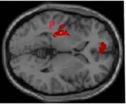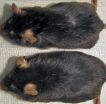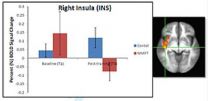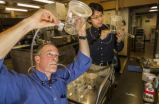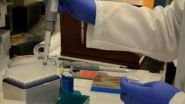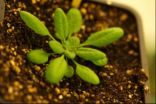Molecules involved in rheumatoid arthritis angiogenesis identified
2014-05-16
Two protein molecules that fit together as lock and key seem to promote the abnormal formation of blood vessels in joints affected by rheumatoid arthritis, according to researchers at the University of Illinois at Chicago College of Medicine, who found that the substances are present at higher levels in the joints of patients affected by the disease.
Their results are reported in the journal Annals of the Rheumatic Diseases.
"Our results show, for the first time, that these two proteins – a receptor and its corresponding binding protein - play a key role in the progression ...
US foreclosures drive up suicide rate
2014-05-16
HANOVER, N.H. – May 16, 2014 – The recent U.S. foreclosure crisis contributed significantly to the nation's jump in suicides, independent of other economic factors associated with the Great Recession, according to a study by Dartmouth and Purdue professors publishing Monday.
The study, publishing in the June issue of the American Journal of Public Health and available online now, is the first to ever show a correlation between foreclosure and suicide rates.
The authors analyzed state-level foreclosure and suicide rates from 2005 to 2010. During that period, the U.S. ...
Analysis finds wide variation in lung cancer rates globally
2014-05-16
ATLANTA – May 16, 2014—The only recent comprehensive analysis of lung cancer rates for women around the world finds lung cancer rates are dropping in young women in many regions of the globe, pointing to the success of tobacco control efforts. However, rates continue to increase among older women in many countries, indicating a need for more concentrated efforts to initiate or expand comprehensive tobacco control programs across the globe to curtail future tobacco-related lung cancer deaths. The study is published early online in Cancer Epidemiology, Biomarkers & Prevention.
Lung ...
On the shoulder of a giant: Precursor volcano to the island of O'ahu discovered
2014-05-16
Researchers from the University of Hawai'i – Mānoa (UHM), Laboratoire des Sciences du Climat et de L'Environment (France), and Monterey Bay Aquarium Research Institute recently discovered that O'ahu actually consists of three major Hawaiian shield volcanoes, not two, as previously thought. The island of O'ahu, as we know it today, is the remnants of two volcanoes, Wai'anae and Ko'olau. But extending almost 100 km WNW from Ka'ena Point, the western tip of the island of O'ahu, is a large region of shallow bathymetry, called the submarine Ka'ena Ridge. It is that region ...
Neuronal activation by acupuncture at Yongquan and sham acupoints for DOC: A PET study
2014-05-16
Acupuncture is a traditional Chinese medicine technique that is often used to help improve the level of consciousness in patients with disorder of consciousness (DOC). However, the responses to stimulation of acupoints in patients with DOC are not fully understood. Hao Zhang and colleagues from China Rehabilitation Research Center found that acupuncture at the Yongquan acupoints induced stronger neuronal activity than acupuncture at the sham acupoints shown on positron emission tomography (PET). These researchers believe that acupuncture at the Yongquan acupoints may increase ...
Effect of repeated-pulse transcranial magnetic stimulation at the Guangming point on EEGs
2014-05-16
In a recent study reported in the Neural Regeneration Research (Vol. 9, No. 5, 2014), repeated-pulse transcranial magnetic stimulation was administered to healthy people at the left Guangming (GB37) and a mock point, and calculated the sample entropy of electroencephalogram signals using nonlinear dynamics. Additionally, researchers compared electroencephalogram sample entropy of signals in response to visual stimulation before, during, and after repeated-pulse transcranial magnetic stimulation at the Guangming. Results showed that repeated-pulse transcranial magnetic stimulation ...
New treatment targeting versatile protein may protect brain cells in Parkinson's disease
2014-05-16
In Parkinson's disease (PD), dopamine-producing nerve cells that control our movements waste away. Current treatments for PD therefore aim at restoring dopamine contents in the brain. In a new study from Lund University, researchers are attacking the problem from a different angle, through early activation of a protein that improves the brain's capacity to cope with a host of harmful processes. Stimulating the protein, called Sigma-1 receptor, sets off a battery of defence mechanisms and restores lost motor function. The results were obtained in mice, but clinical trials ...
Domesticated animals provide vital link to emergence of new diseases
2014-05-16
Research at the University of Liverpool suggests pets and other domesticated animals could provide new clues into the emergence of infections that can spread between animals and humans.
The study showed that the number of parasites and pathogens shared by humans and animals is related to how long animals have been domesticated.
The findings suggest that although wild animals may be important for the transmission of new diseases to humans, humanity's oldest companions – livestock and pets such as cattle and dogs provide the vital link in the emergence of new diseases.
Using ...
Tricking the uncertainty principle
2014-05-16
Caltech researchers have found a way to make measurements that go beyond the limits imposed by quantum physics.
Today, we are capable of measuring the position of an object with unprecedented accuracy, but quantum physics and the Heisenberg uncertainty principle place fundamental limits on our ability to measure. Noise that arises as a result of the quantum nature of the fields used to make those measurements imposes what is called the "standard quantum limit." This same limit influences both the ultrasensitive measurements in nanoscale devices and the kilometer-scale ...
Mothers' sleep, late in pregnancy, affects offspring's weight gain as adults
2014-05-16
Poor-quality sleep during the third trimester of pregnancy can increase the odds of weight gain and metabolic abnormalities in offspring once they reach adulthood, according to a new study published online May 8, 2014, in the journal Diabetes.
The researchers linked the excess weight and changes in metabolism to epigenetic modifications that reduce expression of the gene for adiponectin—a hormone that helps regulate several metabolic processes, including glucose regulation. Lower levels of adiponectin correlate with increased body fat and reduced activity.
"Disrupted ...
Water pipe smoking causes significant exposure to nicotine and cancer-causing agents
2014-05-16
PHILADELPHIA — Young adults who smoked water pipes in hookah bars had elevated levels of nicotine, cotinine, tobacco-related cancer-causing agents, and volatile organic compounds (VOC) in their urine, and this may increase their risk for cancer and other chronic diseases, according to a study published in Cancer Epidemiology, Biomarkers & Prevention, a journal of the American Association for Cancer Research.
"This study reports systemic intake of tobacco-specific nitrosamines and VOCs after a typical water pipe-smoking session in a hookah bar setting, thus making the ...
War and peace (of mind)
2014-05-16
Researchers from the University of California, San Diego School of Medicine and Naval Health Research Center have found that mindfulness training – a combination of meditation and body awareness exercises – can help U.S. Marine Corps personnel prepare for and recover from stressful combat situations.
The study, published in the May 16, 2014 online issue of the American Journal of Psychiatry, suggests that incorporating meditative practices into pre-deployment training might be a way to help the U.S. military reduce rising rates of stress-related health conditions, including ...
Male infertility linked to mortality in study led by Stanford researcher
2014-05-16
STANFORD, Calif. — Men who are infertile because of defects in their semen appear to be at increased risk of dying sooner than men with normal semen, according to a study led by a researcher at the Stanford University School of Medicine.
Men with two or more abnormalities in their semen were more than twice as likely to die over a roughly eight-year period as men who had normal semen, the study found.
Smoking and diabetes — either of which doubles mortality risk — both get a lot of attention, noted the study's lead author, Michael Eisenberg, MD, PhD, assistant professor ...
Magnets and kids: A dangerous duo
2014-05-16
Cincinnati, OH, May 16, 2014 -- Magnet ingestions by children have received increasing attention over the past 10 years. With the growing availability of new and stronger neodymium-iron-boron magnets being sold as "toys," there has been an increase of cases of ingestion, resulting in serious injury and, in some cases, death. In a new study scheduled for publication in The Journal of Pediatrics, researchers studied the trends of magnetic ingestions at The Hospital for Sick Children (SickKids), Canada's largest children's hospital.
Matt Strickland, MD, and colleagues ...
Study reveals 1 in 10 16-year-olds surveyed have considered self-harm
2014-05-16
One in ten 16-year-olds surveyed in a new study by Queen's University and the University of Ulster have considered self-harm or taking an overdose.
The results of the annual Young Life and Times (YLT) survey, which are published today (Friday 16 May) during Mental Health Awareness Week, also found that almost a third of 16-year-olds questioned had experienced serious personal, emotional or mental health problems at some point in the past year.
1,367 16-year-olds across Northern Ireland took part in the 2013 survey undertaken by ARK, a joint initiative by Queen's University ...
Living conditions in Iraq must improve if investment in health system is to yield results
2014-05-16
Despite enormous investment in Iraq's health system in the 10 years since the US-led invasion, the health condition of Iraqis has deteriorated and will fail to improve unless more is done to improve living conditions. A review published today in the Journal of the Royal Society of Medicine concludes that continual investment in health services is crucial to elevate the health status of the Iraqi population, but that progress will be limited without improvements in housing, water and sanitation, electricity, transport, agriculture, education and employment.
The study was ...
Interrupted breathing during sleep affects brain neurons necessary to regulate heart rate
2014-05-16
Interrupted breathing during sleep affects brain neurons necessary to regulate heart rate
Sufferers of a common sleep-breathing disorder have diminished activity among neurons responsible for keeping heart rate low, reveals a new study published today [16 May] in The Journal of Physiology.
The research discovered that in obstructive sleep apnoea (OSA), neurons in the brainstem that control heart rate experience a blunting of their activity. The reduction of neuronal activity likely contributes to the increased heart rate, blood pressure and risk of adverse cardiovascular ...
Two large meals (breakfast and lunch) better than 6 small meals with same calories for controlling weight and blood sugar in people with type 2 diabetes
2014-05-16
Research published in Diabetologia (the journal of the European Association for the Study of Diabetes) suggests that two large meals (breakfast and lunch), rather than six small meals with the same total calories, are better for controlling weight and blood sugar in people with type 2 diabetes. The research is by Dr Hana Kahleová, Diabetes Centre, Institute for Clinical and Experimental Medicine, Prague, Czech Republic, and colleagues.
The study assessed 54 patients (29 men, 25 women) treated with oral diabetes drugs, aged 30–70 years, BMI 27–50 kg/m2 and HbA1c of 6–11.8% ...
Complex interactions may matter most for longevity
2014-05-16
PROVIDENCE, R.I. [Brown University] — If studying a single gene or a diet that might extend longevity is like searching for a fountain of youth, then a new study calls for looking at something more like the whole watershed. Brown University biologists who experimentally throttled three such factors in fruit flies found that lifespan depended more on interactions among the factors than on the factors themselves.
"I think the main lesson is that these interaction effects are as significant or important as the [single] effects, such as diet effects alone or genetic effect ...
How some trypanosomes cause sleeping sickness while others don't
2014-05-16
Trypanosome parasites transmitted by tsetse flies cause devastating diseases in humans and livestock. Different subspecies infect different hosts: Trypanosoma brucei brucei infects cattle but is non-infectious to humans, whereas T. b. gambiense and T. b. rhodesiense cause sleeping sickness in humans. A study published on May 15th in PLOS Pathogens reveals how humans can fight off some trypanosomes but not others.
Sam Alsford, from the London School of Hygiene and Tropical Medicine, UK, and colleagues, undertook a comprehensive search for genes that make T. b. brucei ...
Walking may have profound benefits for patients with kidney disease
2014-05-16
Washington, DC (May 15, 2014) — For individuals with kidney disease, walking may help prolong life and reduce the risk of needing dialysis or a kidney transplant. That's the conclusion of a study appearing in an upcoming issue of the Clinical Journal of the American Society of Nephrology (CJASN).
Physical inactivity is common among patients with chronic kidney disease (CKD). Che-Yi Chou MD, PhD, Chiz-Tzung Chang, PhD (China Medical University Hospital, in Taiwan) and their colleagues looked to see if an activity as simple as walking might provide benefits to patients. ...
New tool to grow cancer cells streamlines laboratory research
2014-05-16
VIDEO:
Georgetown Lombardi Comprehensive Cancer Center researcher Anna T. Riegel, PhD, discusses a new technique that allows the growth of both normal and cancer cells and keeps them alive indefinitely is...
Click here for more information.
WASHINGTON — A new technique that allows the growth of both normal and cancer cells and keeps them alive indefinitely is transforming and expediting basic cancer research, say investigators from Georgetown Lombardi Comprehensive Cancer Center. ...
New kidney allocation policy could improve the success of transplantations in the US
2014-05-16
Washington, DC (May 15, 2014) — A newly approved US policy regarding allocation of kidneys from deceased donors will likely improve patient and transplant survival, according to a study appearing in an upcoming issue of the Journal of the American Society of Nephrology (JASN). The true effects of the new policy are yet to be seen, however, and officials will evaluate its intended and unintended consequences on an ongoing basis.
In 2013, the Organ Procurement and Transplantation Network in the United States approved a new national deceased donor kidney allocation policy ...
Novel genetic mechanism protects plants from toxic zinc
2014-05-16
Zinc is essential for optimal plant growth and development but when high levels of the metal are present in the soil, it can become toxic to the plant. Consequently, plants need to trigger mechanisms capable of coping with that stress. Researchers from the Instituto Gulbenkian de Ciência (IGC) have now discovered a novel genetic mechanism that protects plants from toxic zinc levels. The research team, led by Paula Duque, identified a gene that produces a protein capable of sequestering zinc inside the cells of the root. In the presence of high levels of zinc, this gene ...
Tumor cells in the blood may indicate poor prognosis in early breast cancer
2014-05-15
Tumor cells in bone marrow of early breast cancer patients predict a higher risk of relapse as well as poorer survival, but bone marrow biopsy is an invasive and painful procedure. Now, it may be possible to identify tumor cells in a routine blood sample and use them as prognostic markers, according to a study published May 15 in the Journal of the National Cancer Institute.
To assess the prognostic value of circulating tumor cells (CTCs) in patients with early breast cancer, Brigitte Rack, M.D., of the Department of Gynecology and Obstetrics, Klinikum Innenstadt, ...
[1] ... [3485]
[3486]
[3487]
[3488]
[3489]
[3490]
[3491]
[3492]
3493
[3494]
[3495]
[3496]
[3497]
[3498]
[3499]
[3500]
[3501]
... [8705]
Press-News.org - Free Press Release Distribution service.

